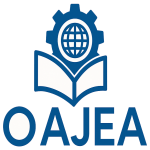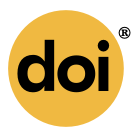Available Links

Md. Hafizur Rahman
Designation: Researcher
Affiliation: HafizLab, Bangladesh
Email: hafizurfpbd@gmail.com
ORCID: 0009-0006-0517-9056
Google Scholar: View Profile
Personal Website: View Profile
Research Interests: Database, Software Development, Agriculture Engineering
Last updated: 2025-07-26
| List of Articles |
|
A Comprehensive Review of M2M Communication Protocols Authors: Md. Hafizur Rahman M. Naderuzzaman Publication Date: 30-07-2025 Abstract: The rapid expansion of the Internet of Things (IoT) and smart device ecosystems has accelerated the development and deployment of Machine-to-Machine (M2M) communication protocols. M2M communication enables autonomous data exchange between devices without human intervention, forming the backbone of modern IoT applications in industries such as healthcare, transportation, energy, and manufacturing. This comprehensive review provides an in-depth analysis of the most widely adopted M2M communication protocols, including HTTP, WebSocket, XMPP, AMQP, MQTT, CoAP, DDS, LPWAN and LwM2M. The paper explores their architectural principles, operational mechanisms, and core features, highlighting their respective strengths and limitations in various application scenarios. Comparative analysis is presented based on critical performance metrics such as scalability, latency, security, energy efficiency, interoperability, and Quality of Service (QoS). The review also discusses the challenges associated with protocol selection, integration, and deployment in resource-constrained environments. Furthermore, emerging trends such as the convergence of edge computing, 5G connectivity, and enhanced security frameworks are examined for their impact on the evolution of M2M communication. The paper concludes by outlining future research directions, including the need for adaptive and intelligent protocol frameworks capable of addressing dynamic application requirements. By synthesizing recent advancements and providing actionable insights, this review aims to guide researchers, engineers, and practitioners in selecting and implementing optimal M2M communication protocols for next-generation IoT systems. |
|
A Smart IoT-Based Environmental Monitoring System for Clinical Labs: Focus on Temperature, Humidity and Air Quality Authors: Md. Hafizur Rahman M. Naderuzzaman Dr. Zohra Khatun Publication Date: 30-07-2025 Abstract: Clinical laboratories require accurate and continuous environmental monitoring to ensure the integrity of biological samples, reagents, and laboratory instruments. Environmental deviations, especially in temperature and air quality, can compromise test accuracy and violate regulatory standards such as ISO 15189. This paper presents the design and development of a smart IoT-based environmental monitoring system tailored for clinical lab environments. The system focuses on real-time monitoring of laboratory freezer temperature, ambient room temperature, humidity, and air quality. It utilizes ESP32 microcontrollers integrated with DS18B20 temperature sensors, DHT11 temperature and humidity sensors, and MQ-135 gas sensors to provide comprehensive environmental surveillance. Data is transmitted via Wi-Fi to a cloud-based dashboard, offering remote access, historical data logging, and customizable alert mechanisms for threshold breaches. To optimize energy consumption, the system incorporates power-efficient features such as deep sleep modes and adaptive sampling intervals. The prototype demonstrates consistent and accurate performance in a working laboratory setting. By offering real-time insights and automated alerts, the system minimizes the risks associated with manual monitoring and enhances compliance readiness. The proposed solution is low-cost, modular, and scalable, making it suitable for deployment in both large and resource-limited clinical laboratories. |
|
A Comprehensive Review of Edge Computing: A Perspective of IoT Authors: Md. Hafizur Rahman Publication Date: 30-07-2025 Abstract: The rapid proliferation of Internet of Things (IoT) devices has created unprecedented demands on network bandwidth, data processing, and latency-sensitive applications. Traditional cloud-centric architectures are increasingly inadequate for supporting the real-time requirements and scalability challenges posed by IoT ecosystems. Edge computing has emerged as a transformative paradigm, enabling computation and storage resources to be placed closer to data sources and end-users. This comprehensive review explores the evolution of edge computing, focusing on its integration with IoT from architectural, operational, and application perspectives. Key enabling technologies, design architectures, and deployment models are analyzed, highlighting their roles in enhancing performance, security, and privacy. The review also discusses prominent use cases across industries, summarizes major challenges—such as interoperability, resource management, and standardization—and outlines future research directions. Ultimately, this paper provides an in-depth perspective on how edge computing is shaping the future of IoT-driven smart environments. |
|
Challenges, Strategies, and Transparency of Digital Transactions in Building a Cashless Society: Bangladesh Perspective Authors: Md. Hafizur Rahman Publication Date: 30-07-2025 Abstract: As part of the Digital Bangladesh initiative, the need for a cashless society has become increasingly significant. Cash transactions still dominate economic activity in Bangladesh, leading to corruption, tax evasion, money laundering, and financial crimes. To transition to a cashless society, it is necessary to encourage digital transactions, formulate effective policies, and implement technology-based transaction monitoring systems. This study examines the challenges of creating a cashless society in Bangladesh, proposes strategic approaches to overcome these barriers, and highlights the role of digital transactions in enhancing financial transparency. Drawing on literature review, policy analysis, and evidence-based reasoning, it emphasizes how the integration of the banking system, mobile financial services, and supportive policy frameworks can accelerate the country’s transition towards a transparent and sustainable cashless economy. |
|
IoT Devices: Classification, Features, and Trends in Modern IoT Systems Authors: Md. Hafizur Rahman M. Naderuzzaman Md. Masud Reza Publication Date: 30-09-2025 Abstract: The Internet of Things (IoT) has revolutionized the way physical objects interact with digital systems, creating a seamlessly connected environment across various domains. This paper presents a comprehensive overview of modern IoT devices, focusing on their classification, core features, and emerging trends. It examines the technical architecture, connectivity protocols, sensing and communication capabilities, and application-specific design considerations of IoT devices. Furthermore, the study highlights their roles in smart homes, healthcare, agriculture, industrial automation, and environmental monitoring. The paper also addresses critical challenges such as interoperability, security, scalability, and energy efficiency. Finally, future research directions and technological advancements are discussed to provide a holistic understanding of the evolving landscape of IoT systems. |
Specialist Categories
- Data Science
- Internet of Things
- Database
- Machine Learning
- Artificial Intelligence
- Software Development
- DevOps
- Hardware Design
- Network and Internet
- Programming and Web Applications
- Robotics and Automation
- Embedded Systems
- Cloud Computing
- Edge Computing
- Data Communications
- Cyber Security
- Agriculture Engineering
- EV Engineering
- Electrical and Electronics Engineering
- Renewable Energy Engineering
 10.64886/oajea.0101.001
10.64886/oajea.0101.001